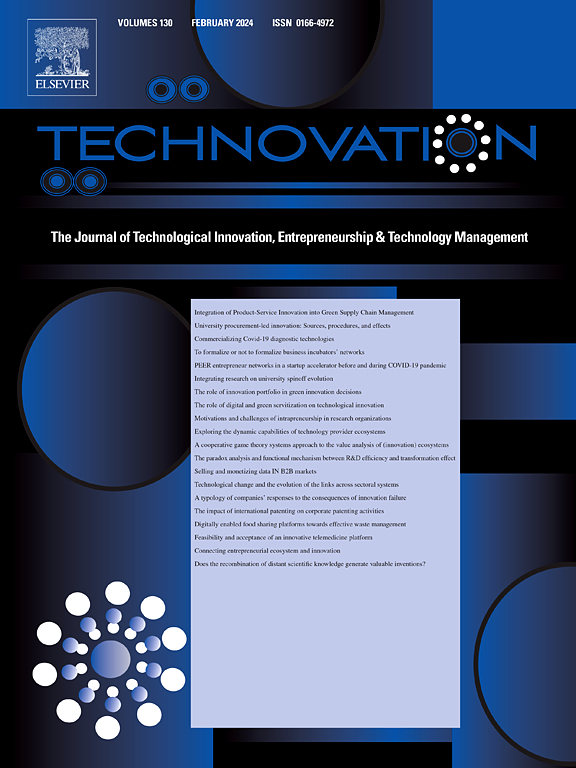Sustainable business model innovation: A technology affordance perspective in the New Space Economy
IF 11.1
1区 管理学
Q1 ENGINEERING, INDUSTRIAL
引用次数: 0
Abstract
Despite the recent hype surrounding the transition from a publicly funded space industry to a commercially driven New Space Economy, the potential of space technology to address societal challenges remains largely underexplored. In response to recent calls to consider private firms as active contributors to addressing the grand challenges associated with the UN 2030 Sustainable Development Agenda, this study builds on previous research on sustainable business model innovation and adopts a technology affordance perspective to examine how firms can leverage space technology for sustainable innovation. Through a comparative multiple case study of 11 international entrepreneurial ventures in the New Space Economy, we identify three key space technology affordances that align the value mechanisms of their business models with their contributions to sustainability goals. Specifically, our findings illustrate how entrepreneurial ventures use space technology to overcome transaction obstacles in reaching and including previously excluded stakeholders, employing space technology as a sharpshooter, Trojan horse, or piggy bank in their pursuit of sustainable business model innovation. This study contributes to the literature on sustainable business models and the New Space Economy, offering valuable implications for management practice and policy.
求助全文
约1分钟内获得全文
求助全文
来源期刊

Technovation
管理科学-工程:工业
CiteScore
15.10
自引率
11.20%
发文量
208
审稿时长
91 days
期刊介绍:
The interdisciplinary journal Technovation covers various aspects of technological innovation, exploring processes, products, and social impacts. It examines innovation in both process and product realms, including social innovations like regulatory frameworks and non-economic benefits. Topics range from emerging trends and capital for development to managing technology-intensive ventures and innovation in organizations of different sizes. It also discusses organizational structures, investment strategies for science and technology enterprises, and the roles of technological innovators. Additionally, it addresses technology transfer between developing countries and innovation across enterprise, political, and economic systems.
 求助内容:
求助内容: 应助结果提醒方式:
应助结果提醒方式:


